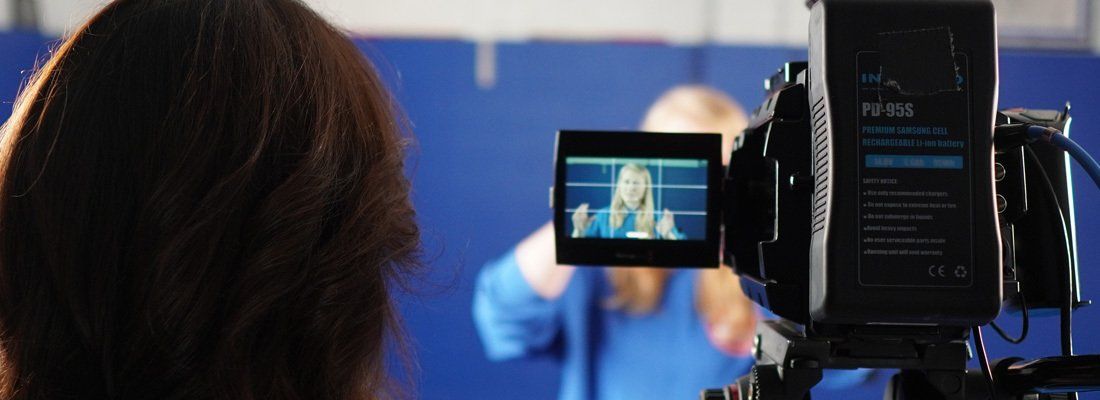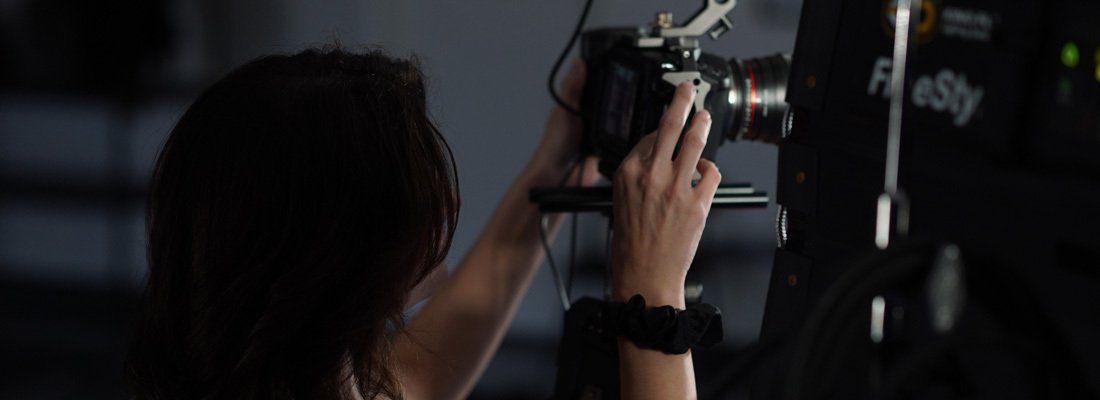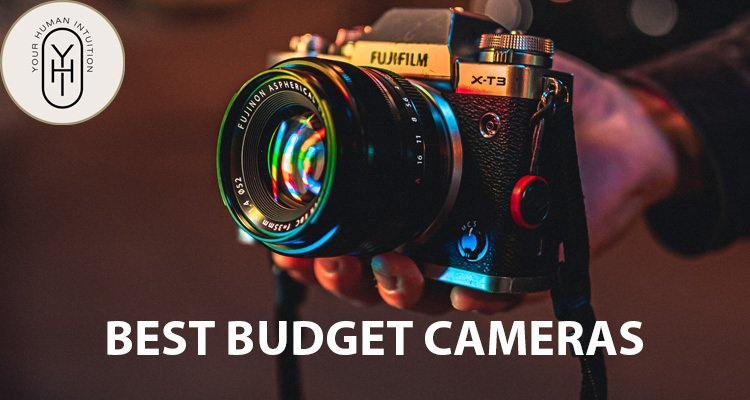What is the 4:3 Format and Why is it Making A Comeback?
I was born in 1983 and grew up in the ’90s when television was entirely in the 4:3 aspect ratio. That is to say, a frame for viewing content that is 4 units tall and 3 units wide. This was how I watched Saturday morning cartoons at Grandma’s house, and Star Trek with my Dad. This frame was the standard as far back as I can remember.
For reference, we now watch the majority of television in the 16:9 aspect ratio that is 16 units wide and 9 units tall. Televisions have been made to fit these dimensions and this is the screen our brain has gotten used to watching over the last 27 years. The majority of films seen in theaters will be viewed in the 2:35 aspect ratio, or 2.35 units wide to 1 unit tall. However, movies like Zach Snyder’s Justice League and several others, are bringing back older aspect ratios in a way that creates visual distinction for their films and a sense of nostalgia for the viewers.
My Start in Filmmaking and the 4:3 Format
Nearly twenty years ago, I was a junior at university getting my BA in Film Production. My friends and I were butting heads with my advisor, who ran the campus television show and didn’t approve of the new techniques and storylines we wanted to try for our videos. Since the scripts I turned in weren’t getting approved, I was on the lookout for gear and distribution for my stories.
So, I traded my screenwriting skills for a Canon XL1 filmmaking kit and wrote the script for Teenage Cocktail, which later went to the Austin Film Festival and lived for several years on Netflix. At the time, this camera was better than the gear we were training with at school and was known for having great color, and adjustable audio controls built into a shotgun microphone. That was the day my true education in filmmaking began.
My friends and I celebrated by creating our very own public access television show, and nothing would ever be the same again. We took to the streets to film comedic skits, wrote music for videos, interviewed students, and adhered to a strict schedule to release a 23 minute show every two weeks. It was trial by fire, and it gave me the opportunity to prove to myself and my professors that I had the skills to entertain.
What I accepted back then, without question, was that everything I was shooting would be relegated to the 4:3 frame. This would be the window through which every story would be told. Sure, HD and the 16:9 ratio had been around since the ’90s, but those cameras were more expensive, and I was working with the camera I had.
The Resurgence of the 4:3 Aspect Ratio
In 2021 I’ve enjoyed the resurgence of plaid-on-plaid, bellbottoms, spaghetti straps, Doc Martins, and more 90’s era swag than I can shake a stick at. Of course, the aspect ratios of yesteryear are back in vogue and so is the frame that defined my childhood and started my career in college. It’s fun to see it making a comeback and I like the nostalgia.
What’s great about filmmaking technology today is that I can make choices for framing that suit my story, aesthetic, and distribution platform instead, of being stuck with one option or another. A filmmaker I admire, Noam Kroll, recently wrote about the artistic benefits of using 4:3 for his next project, and I look forward to seeing his choices play out on screen.
History of the 4:3
The history of the 4:3 frame really does go back to the beginning of the film. Edison used this ratio for the first silent films, and for decades, it was the standard for all television until 1996 when 16:9 was released. What I didn’t know until recently, is that engineers came up with the 16:9 format because it was the difference between 4:3, which most TVs used, and 2.35, which is used for most theatrical releases. This was meant to be a middle ground between the two ratios that would have the least amount of cropping and letterboxing when viewed on TV. I’ll summarize the evolution of my favorite ratios below. To learn a more complete history of film ratios through the years, click here.
So it was no surprise that when Canon released the 7d in 2009, and I upgraded my gear, I was excited for the opportunity to play with this frame that was new to me and had been inaccessible until that point. Like the velveteen rabbit, I discarded the 4:3 view for what I perceived to be the more professional and cinematic frames of the future. Now, twelve years later, filmmakers are taking another look at the 4:3 frame, and it’s more about artistic choice, than it is about accessibility.
Short History of Aspect Ratios
- Silent film format (1892). 4:3 (1.33:1), the standard for television until 1996.
- Academy Ratio (1932). 1.37:1
- CinemaScope (1953). 2.35:1, common for theatrical films
- VistaVision (1954). 1.85:1 Used for most theatrical films.
- HDTV (1996). 16:9 (1:78), used as a compromise between 4:3 and 1.37 as the rise of home entertainment encouraged more film viewing at home
In my opinion, film is the most voyeuristic of the art forms. I have more separation between myself and the actors than I do when I’m at the theatre, and it occurs to me that I’m looking through a window into their lives. The aspect ratio chosen by a filmmaker is the frame or the ‘window frame’ through which I will view that story.
There are many factors to consider, including; number of characters per scene, the amount of establishing and nature shots used to tell the story, composition, artistic preference using positive and negative space, and how you’ll direct actors inside that frame, to name a few. While some might prefer 4:3 for close-ups on a single face, others believe that 16:9 will provide the right amount of room for a two-shot. Since we have different eras associated with different frame sizes, each choice will also lend itself to a mood and period of time.
Example
For example, 9:16, or the frame created by recording on a vertical smartphone, has a distinctly modern feeling, and also might occur as less cinematic because most of the content I view on my phone was also recorded on a phone, and is meant to be consumed on a phone. Another example of using the frame to create a sense of time is Wes Anderson’s The Grand Budapest Hotel.
As the story progresses through three different periods of time, he uses a separate aspect ratio for each; The Academy Ratio of 1.35 during the ’30s, the 2.35 Anamorphic during the ’60s, and Widescreen Standard at 1.85 during the ’80s (this frame is very similar to 16:9). Since the movie jumps between these different time periods throughout the story, the frame is a visual clue to help the audience discern what period of time they are watching. Here are some visual pros and cons I consider when looking at my story and the frame. Whatever you’re choosing, try to let the story and the platform for distribution determine your choice for aspect ratio.
Aspect Ratio Pros and Cons
- 4:3 Standard Aspect Ratio
- Pros; great for framing faces and close up, focused view of expression and micro-expressions.
- Cons; less available frame for 2 shots, establishing shots, nature, and less frame to choreograph actors. Different options for composition, positive, and negative space.
- 16:9 Standard HD
- Pros; more room for faces, allowing creative play with positive and negative space in composition. More room for establishing shots, two shots, and nature. More room for choreography of movement in the frame.
- Cons; less intimate close-ups for faces. Less expression seen from actors.
- 2.35 Anamorphic Widescreen
- Pros; elegant frame for nature, epic landscapes, establishing shots, and actor choreography. Considered the gold standard for cinema.
- Cons; less intimate close-ups for faces. Less expression seen from actors.
Planning to Screen
Second, to the story, I’m telling, how I plan to screen the project will be the next most important factor when deciding which frame to choose. Will it be screened primarily on social media like Facebook, Instagram, or Tiktok? I’d recommend the 9:16 if that’s the case. This ratio works better for how I’m naturally holding my cellphone already and doesn’t require me to adjust the view or angle of my phone, which can be annoying if I’m flipping through content quickly. Is it destined for a viewing platform like YouTube or Vimeo?
In that case, I’d choose a horizontal frame like 4:3 or 16:9 because the audience will be expecting a horizontal frame and will be more likely to view the work on a computer or TV. Is the film coming soon to a theatre near me? If that’s the case, I might be more interested in a common theatrical ratio like 1.85.
While this is the standard for theatrical release, I might also consider something larger like the Anamorphic Scope at 2.35:1, if my project is heavily driven by landscapes, nature, and wide shots, like some documentaries. Whatever the content or viewing platform, we can all agree that I have more choices available than ever before. These choices can be overwhelming or liberating. Taking a moment to focus on the content I’m producing, and the final delivery to my audience will make my framing choices one less thing I have to fret about.
Conclusion
The first movie in recorded history is attributed to Lois Le Prince and his film, Roundhay Garden Scene, in 1888. That means that we’ve been perfecting this art form for the past 133 years. If you’re reading this just after I’ve published it in 2021, we are currently living in the golden era of independent filmmaking. I have more technology readily available in my pocket than most filmmakers have had for the last hundred years.
This can be a blessing and a burden, if you struggle with overwhelm around making choices.
Thankfully, there are two driving factors that will help you determine how to frame your film. What’s your story, and where is it going to be viewed? Trends come and go. If you want to play with something new, and it makes sense for the project and your audience, go for it. This is an art and it is fun. Play with your options, be intentional in your choices, and use your intuition.
If you're looking for a company to help you with your corporate video, music video, or have any other video needs, click here to schedule a chat with me and here to see the packages I offer.



